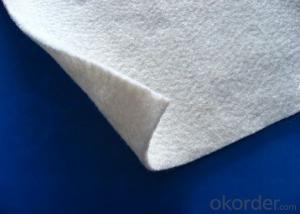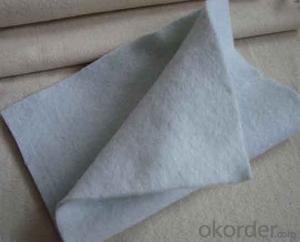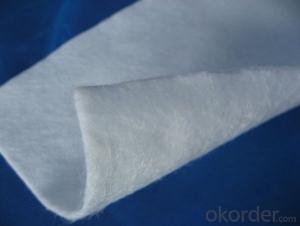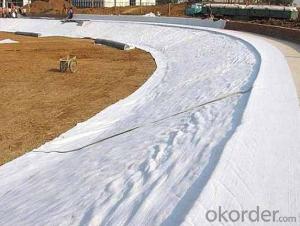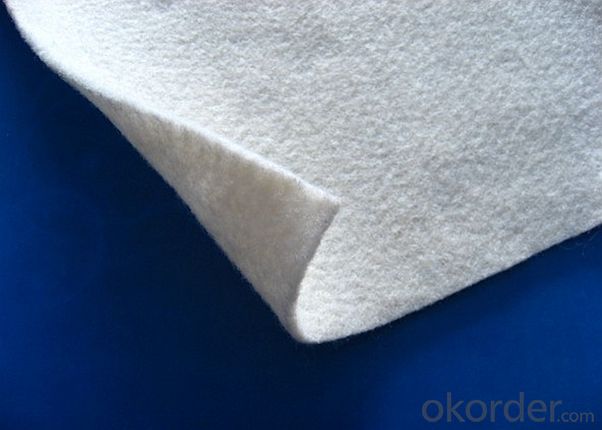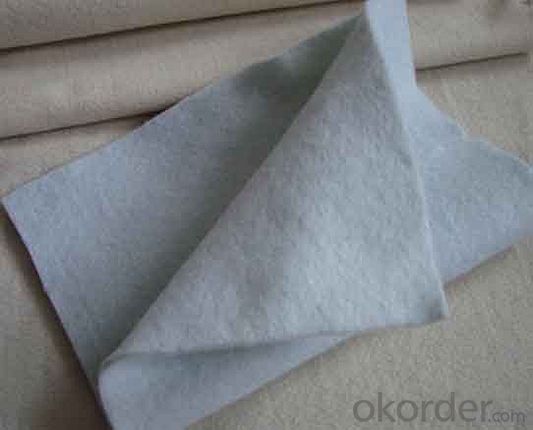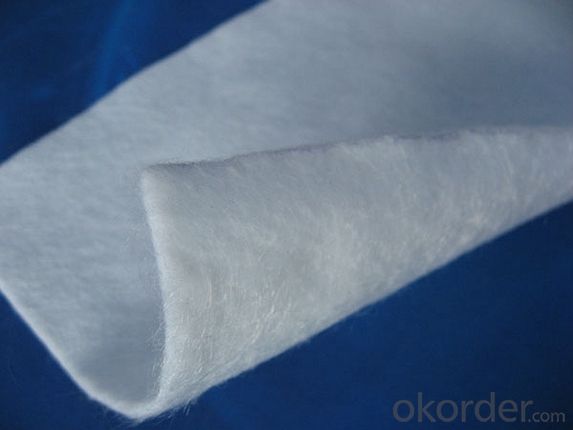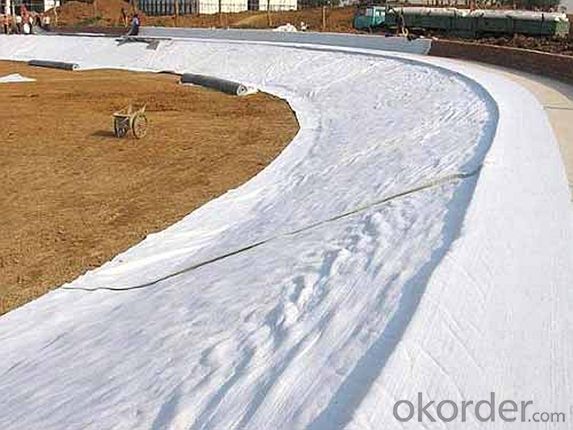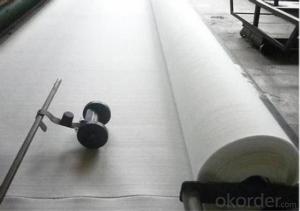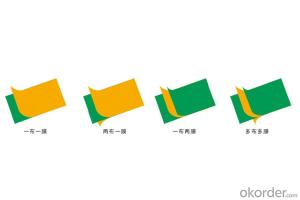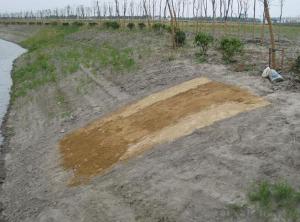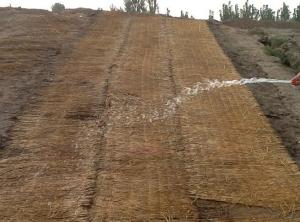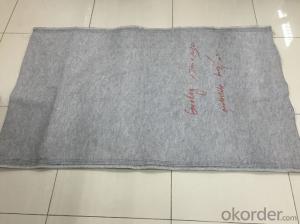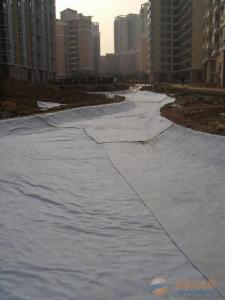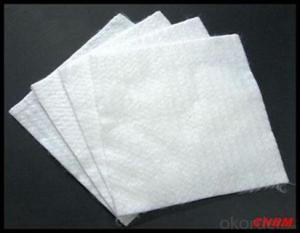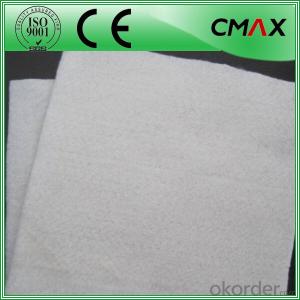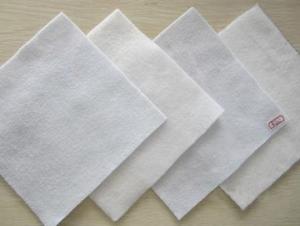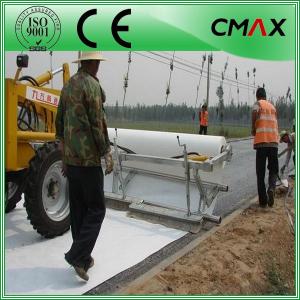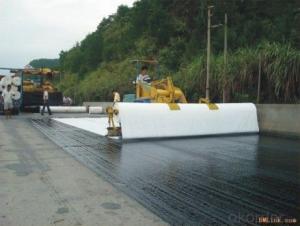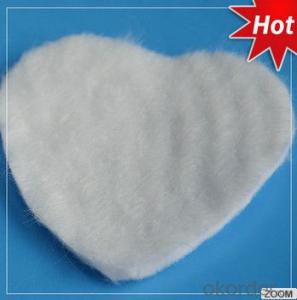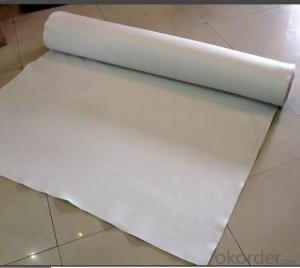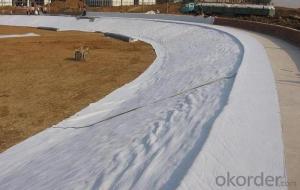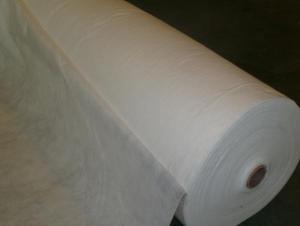Geotextile Landi White Polypropylene Nonwoven Geotextile Used in Construction
- Loading Port:
- China main port
- Payment Terms:
- TT OR LC
- Min Order Qty:
- 1000 g/m²
- Supply Capability:
- 1000000 g/m²/month
OKorder Service Pledge
OKorder Financial Service
You Might Also Like
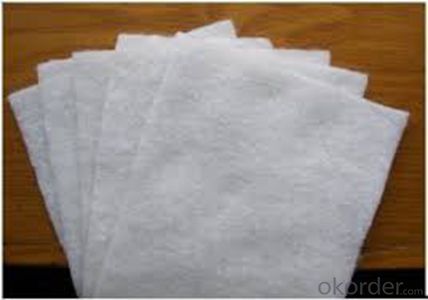
Product
Type:
Geotextiles, Nonwoven Geotextile woven Geotextile
Place of Origin:
Shandong, China (Mainland)
Geotextile uses:
Separate: Geotextile when used as a separation layer prevents two different fill materials such as aggregate and soil from combining. When used correctly the geotextile will increase the life span of the civil project, allowing the two separate layers to perform as designed for longer.
Protection: Geotextile when used as a protection layer acts as a cushioning barrier between the geosynthetic lining system and other layers of the dam or landfill cell. Generally the larger mass rolls of geotextile provide the best cushioning protection. As a protection barrier it helps prevent puncturing and leaks from external forces coming into contact with the liner.
Property:
1.High strength ; low deformation.
2. Durability: steady property, not easy to resolved, airslaked and keep the original property long term.
3. Anti-erosion: anti-acid, anti-alkali, resist insects and mould.
4. Permeability: the woven geotextile can control the sieve size to retain permeability.
Our Service
1.On a regular basis or as per your request,we entrust national testing agencies to conduct quality inspections
2. Strictly in accordance with the ISO9001-2008 international quality system standard,we monitor and manage the whole process throughout production,quality testing,and measurement to ensure product quality
3. For quality-related construction delay or substandard construction(except for damage or losses due to customer’s responsibility or irresistible natural disasters),we have refunding,replacement,and repair services.We will respond to customers’ feedbacks on quality issues within 24 hours.
FAQ:
Q: What kind of payments does jenor support?
A: T/T, L/C, Cash are accepted.
Q: Do you charge for the samples?
A: Accordeing to our company policy, the samples are free, we only charge the freight fee. And we will return the freight fee during the next order.
Q: Can you produce according to customers' design?
A: Sure, we are professional manufacturer, OEM and ODM are both welcome.
Q: Do you have other products?
A: Yes, please check the pictures:
- Q: Can geotextiles be used in underground applications?
- Yes, geotextiles can be used in underground applications. They are commonly used to separate, filter, and reinforce soils in various underground projects, such as drainage systems, roadways, retaining walls, and tunnels. Geotextiles help to improve soil stability, prevent soil erosion, and provide effective drainage, making them a valuable component in underground construction.
- Q: Can geotextiles be used in waste containment systems?
- Yes, geotextiles can be used in waste containment systems. They are commonly employed as a barrier or liner material to prevent the escape or migration of waste materials, such as leachate, from landfills or other waste disposal sites. Geotextiles provide reinforcement, filtration, and separation properties, helping to stabilize the waste and protect the environment by reducing the risk of contamination.
- Q: How do geotextiles affect visual aesthetics?
- Geotextiles can greatly enhance visual aesthetics by providing a protective layer that improves the overall appearance of landscapes. They can be used to control erosion, stabilize slopes, and prevent weed growth, resulting in cleaner and more organized outdoor spaces. Additionally, geotextiles can be concealed beneath surfaces such as lawns or gravel, maintaining a visually pleasing environment while serving their functional purpose.
- Q: What are the factors to consider when maintaining geotextiles?
- When maintaining geotextiles, there are several factors to consider. Firstly, it is important to regularly inspect the geotextiles for any signs of damage or wear. This includes checking for tears, holes, or fraying. Secondly, proper cleaning and maintenance techniques should be followed to ensure longevity. This may involve removing debris or vegetation that could obstruct the performance of the geotextiles. Additionally, it is crucial to consider the environmental conditions in which the geotextiles are installed. Factors such as temperature, moisture, and chemical exposure can impact their performance and require appropriate maintenance measures. Lastly, it is essential to adhere to manufacturer guidelines and recommendations to ensure effective maintenance and maximize the lifespan of the geotextiles.
- Q: How do geotextiles contribute to the stability of railroad ballast?
- Geotextiles contribute to the stability of railroad ballast by providing separation, filtration, and reinforcement functions. They act as a barrier between the ballast and underlying soil, preventing the mixing of materials and maintaining the integrity of the track system. Geotextiles also help to filter out fine particles, preventing clogging and maintaining proper drainage. Additionally, they provide reinforcement, distributing the load more evenly and reducing the potential for settlement and deformation. Overall, geotextiles enhance the stability and longevity of railroad ballast, improving the performance of the track system.
- Q: What are the environmental impacts of geotextile production?
- The environmental impacts of geotextile production include energy consumption, greenhouse gas emissions, and potential waste generation. The manufacturing process of geotextiles requires significant energy input, often sourced from fossil fuels, leading to the release of greenhouse gases. Additionally, the extraction and processing of raw materials for geotextiles can have adverse effects on ecosystems, including habitat destruction and soil degradation. Waste generation is another concern, as the production process may generate non-recyclable or non-biodegradable waste materials. However, the use of geotextiles in various applications can also have positive environmental impacts, such as reducing soil erosion and promoting sustainable land management practices.
- Q: Are geotextiles suitable for use in geotextile tube dewatering systems?
- Yes, geotextiles are suitable for use in geotextile tube dewatering systems. Geotextiles are designed to provide filtration, separation, and reinforcement functions, making them ideal for use in dewatering systems that require the removal of water from sediments or sludge. The permeable nature of geotextiles allows water to pass through while retaining solids, ensuring efficient dewatering and sediment containment.
- Q: Can the geotextile function be a filter?
- Hello, geotextile is the most important role is to filter, some of the above works of water filter material is mainly used geotextile, geotextile price is relatively low, relatively high tensile strength, can play a filtering effect. Zhongrui geotech Zhang Mingchao answer for you.
- Q: Geotextile drainage network and geotextile how to heat stick
- Geotextile and geotextile crimp part of the use of sewing or hot air welding. Hot air welding is the connection method of filament geotextile, that is, with the hot air gun on the connection of two pieces of cloth instantaneous high temperature heating, so that part of the molten state, and immediately use a certain external force to make it firmly together. In the case of wet (rain and snow) weather can not be hot adhesive connection, geotextile should take another method of a suture connection method, that is, with a dedicated sewing machine for two-wire suture connection, and the use of anti-chemical UV suture.
- Q: How are geotextiles installed?
- Geotextiles are typically installed by laying them over the desired area and securing them with stakes or pins. They can also be anchored using sandbags or rocks, depending on the specific application. The installation process may involve preparing the ground, removing any debris or vegetation, and ensuring proper alignment and overlap of the geotextile rolls.
Send your message to us
Geotextile Landi White Polypropylene Nonwoven Geotextile Used in Construction
- Loading Port:
- China main port
- Payment Terms:
- TT OR LC
- Min Order Qty:
- 1000 g/m²
- Supply Capability:
- 1000000 g/m²/month
OKorder Service Pledge
OKorder Financial Service
Similar products
Hot products
Hot Searches
Related keywords
